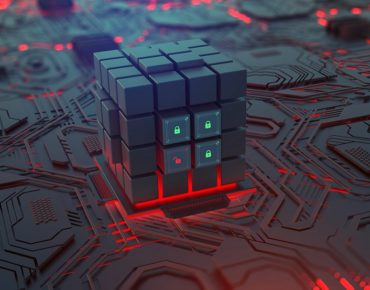Nvidia Uses AI to Detect Insider Threats

New cybersecurity attack vectors are emerging to steal data and break into systems, but Nvidia has an artificial intelligence toolkit that constantly learns to keep up with the fast changes.
The graphics chip maker is adding its Morpheus software development kit, which is targeted at cybersecurity, to its AI Enterprise 3.0, which was announced last month.
Morpheus uses many techniques to identify possible security problems in a computing infrastructure before they become a major problem. The AI can track unusual behavior on a network that could result in systems getting compromised.
"The business outcome is about really trying to provide a means to do insider threat detection in a very efficient way and being able to alert security teams of potentially compromised credentials or lateral movement within the enterprise," said Justin Boitano, vice president at Nvidia.
For example, Morpheus can track any unusual behavior by using natural language processing to inspect network traffic and logs to identify threats. If there are certain patterns that look irregular, such as a person logging in from an unusual place or not matching up to expected patterns or policies, it will alert a security team to look at the issue. The goal is to protect systems from phishing, social engineering or other threats.
"Cybersecurity is a data problem and the more data that you can analyze and look at, the better the decisions, and the better the alerts that you're going to provide the security teams," said Bartley Richardson, director of cybersecurity engineering and research and development at Nvidia.
For far too long, people were trying to cull or reduce the size of data because of the lack of compute capabilities, Richardson said. He added that performance gains of accelerated computing make it much more cost efficient to apply these techniques in production.
But implementing the Morpheus toolkit to prevent threats is not as simple as installing an antivirus program. You will need Nvidia GPUs, and the chip maker in a blog entry said that Morpheus can run on as little as four Nvidia A100 GPUs.
Customers will be able to try out Morpheus on Launchpad, which is Nvidia's cloud-based GPU infrastructure on which customers can test out the company’s AI technologies. Morpheus will be added to Launchpad on Tuesday.
AI implementation can be difficult, with knowledge of Python, AI hardware selection techniques, and pulling code from repositories such as GitHub. But Nvidia is trying to get AI out of the realm of programmers and data scientists.
"The intention of Launchpad is to help upskill it to get closer to being able to take some of these AI workloads which are more like reference applications, and stand them up as proof of concepts," Boitano said.
Launchpad provides a training pipeline with reference code that shows users how to implement AI projects. It walks through users step by step on how to take reference code, how to build user-specific models and then how to inference using those models.
Alternately, Nvidia is working with service providers to understand and set up broader projects at companies.
"Every CISO we've talked to in critical infrastructure companies ... when we talk to them about the real worries of identity threats, insider threats... and manipulation of users credentials, they are very interested in this approach and you know, they can create a pretty quick project," Boitano said.












